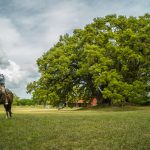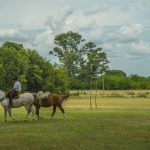On the 30th of January, 2016, I spent the day at an Argentine ranch, more commonly known as an “estancia,” where I rode a horse name Coca-Cola, ate Argentinian style asado (barbecue), and met several intriguing Porteños, a term used to refer to people who grew up in a port city. Being that Buenos Aires is a port city, this term derived from the many Spanish and Italian immigrants that settled there during the turn of the 19th century. With this in mind, today it is frequently used to distinguish their identity from other Argentinians.
Typically, when one visits an estancia, one will find authentic gauchos (Argentinian cowboys). However, the Estancia La Porteña — one of the most historical estancias that exists in Argentina, located just outside the very small town San Antonio de Areco — accommodates tourist guests in hopes of educating the public of their very distinct culture. Thus, authentic gauchos do not exist here at the Estancia La Porteña. However, public opinion is divided on whether gauchos still exist today or not. The figure of the gaucho — like the American cowboy — is tied to a particular historical time and a very specific lifestyle. In this sense, gauchos disappeared by the end of the 19th century. A more liberal interpretation of the term gaucho would suggest that gaucho successors or descendants carry on some of the traditions in clothing and horsemanship, and a number of today’s farmhands could be considered the modern equivalent of the gaucho (except for those who work at tourist locations). Nevertheless, there is still much to be learned from visiting this historical site.
While visiting La Porteña, I realized that the gaucho is the main attraction where he displays his horsemanship, tends to the farm animals, plays his guitar, cooks asado, and entertains his guests. To complement the males’ tasks, most of the women cook inside, serve pastries and empanadas, offer beverages, and clean after their guests. After the daily chores have been completed, one woman may even lead a dance lesson after dinner to complete the experience.
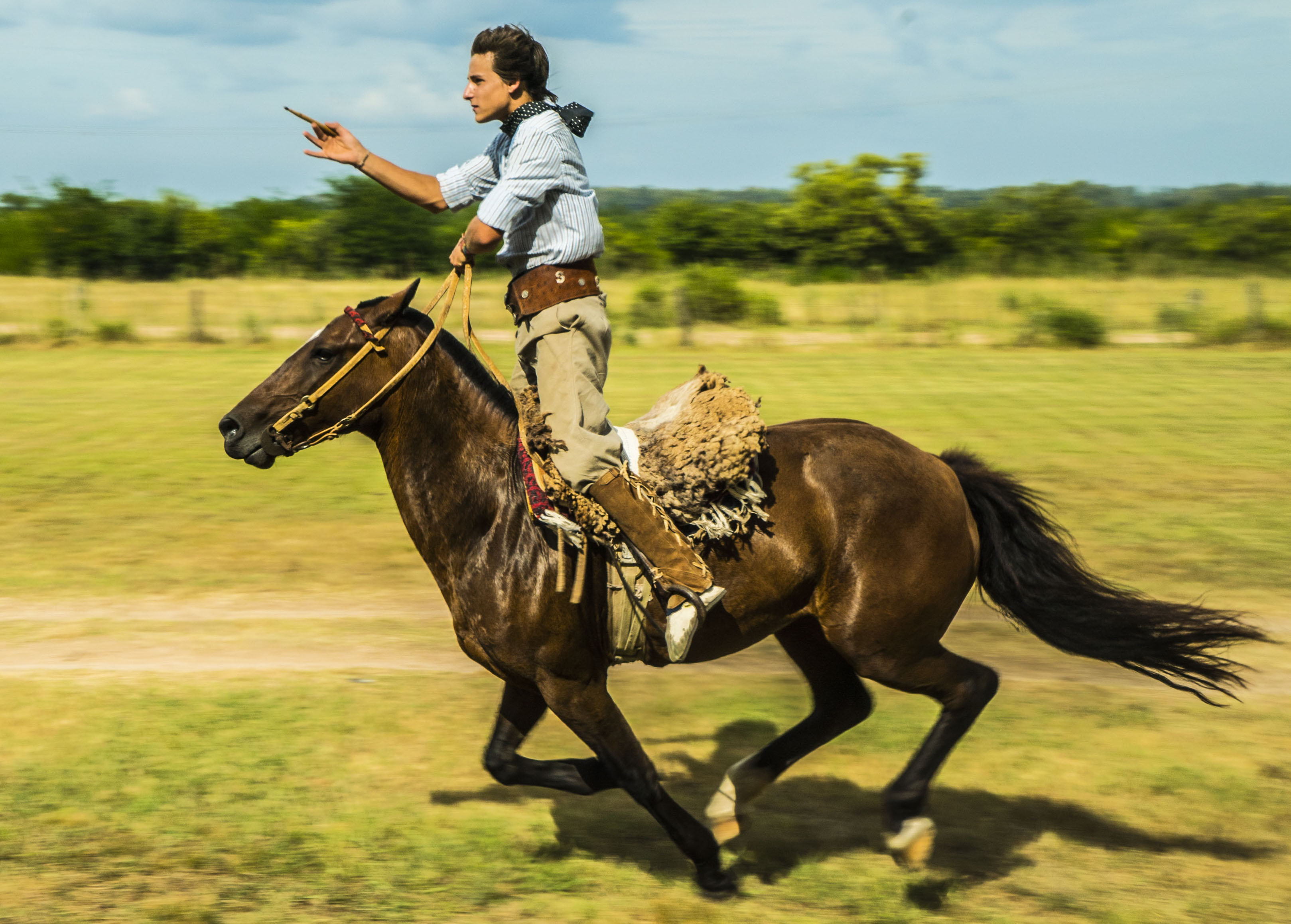
Luciano (age 18) participating in an a traditional sport called La Corrida de Sortija in which a ring or “sortija” is hung loose from an arch. A gaucho must ride his horse at high speed and use a pointed tool called “palillo” or “puntero” to capture it. In some special circumstances, the gaucho may offer the ring to his beloved woman of choice.
The life led at such an estancia is indeed gorgeous. However, with every beautiful lifestyle, comes its respective hardship as well. Historically, gauchos were either creole or mestizo men. They traveled on horseback and lived off the land spending their free time skillfully playing the guitar or sipping matte. However, in 1846, when British farmers first implemented their invention of the fence in Argentina, farmers began to exercise their right to establish their private property. As a result of privatization, the independent and free-roaming lifestyle of the gaucho came to an end.
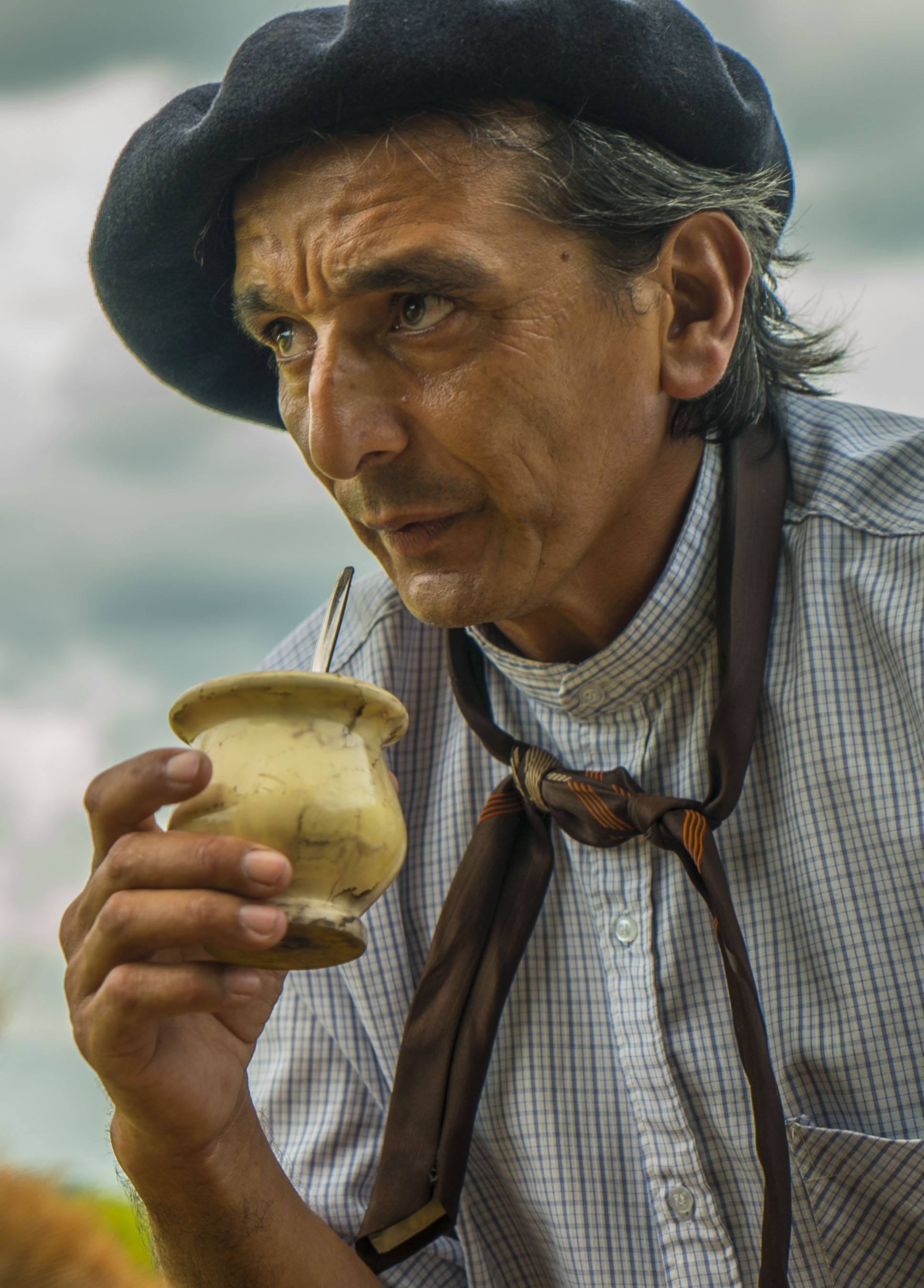
Martín Tatta relaxing on his horse and sipping on matte, a traditional South American caffeine-rich beverage particularly found in Argentina.
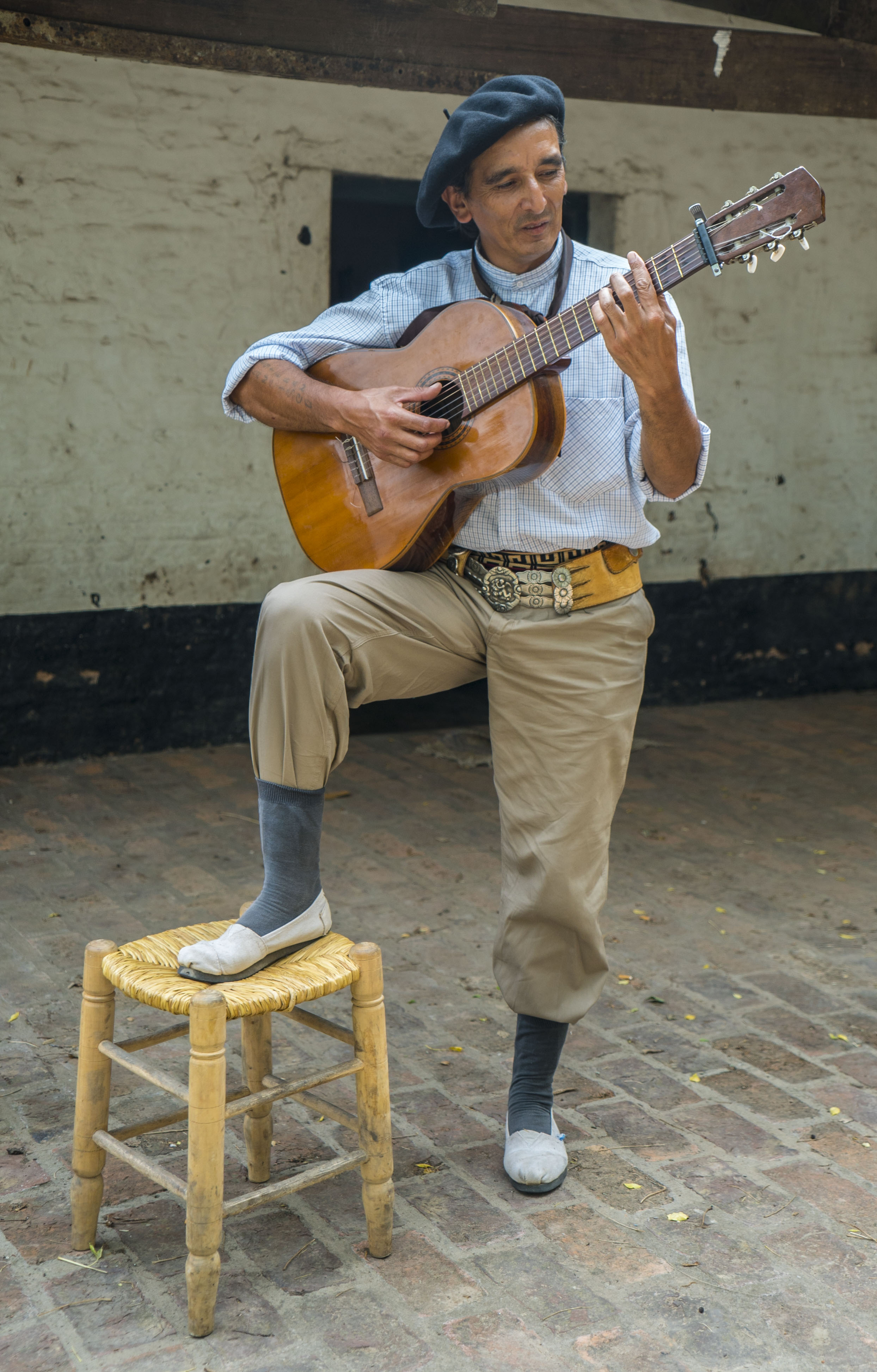
Martín playing his guitar after dinner.
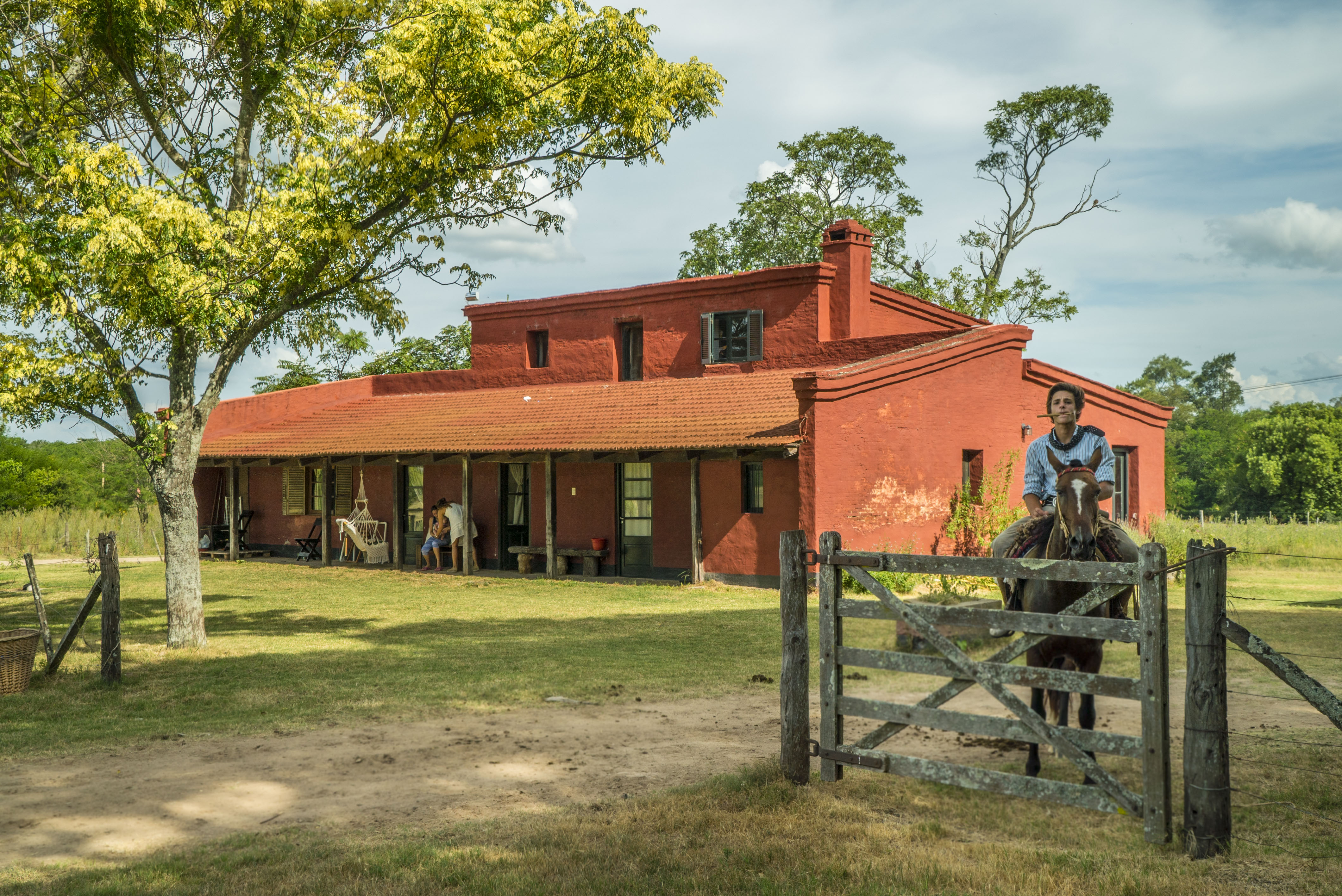
One of the living spaces located in La Porteña.
In addition, the gauchos who were often considered lazy and barbaric by higher classes, were also admired for their horsemanship and hunting skills. As a result, the oppressive Argentine oligarchy took advantage of their skills and issued an ultimatum for the gauchos: they could either work for the estancias of the upper-class or be immediately drafted into the Argentine military. This ultimatum marked the start of a strict interdependent relationship with its landowning class and the rest of Argentine society. The gauchos produced meat products for export and consumption on both a national and international level. In turn, the profits supported the gauchos and helped stabilize Argentina’s economy. However, the once free-roaming gauchos had little autonomy or voice over the direction of their vocational lives and they, along with other minority groups, only served as working-hands for various estancieros (estancia owners) — tending horses and cattle. Thus, like many underserved minorities, gauchos were forced into an oppressive class structure that ultimately served only the ruling classes of Argentina.
My visit to the Estancia La Porteña provoked me to reflect on my own family and how they were previously affiliated with gauchos of the working-class; but more importantly, how my grandmother escaped this lifestyle by her own wits. My great paternal grandfather, named Raymundo Batalla, was a gaucho in a province located near the northeast side of Argentina called Santiago del Estero. Raymundo fathered many children together with my great grandmother Feliza Avila; but sadly on September 18th, 1920, Feliza died while giving birth to my grandmother, Maria Batalla. Feliza’s death weighed heavily on Raymundo and as a means to cope with the trauma, he abandoned his newborn baby Maria and turned to alcohol.
As a result of Raymundo’s poor choice in coping mechanisms, Maria felt the repercussions that would eventually propel her to escape the negative environment she was dealt with. Before this would occur, Maria was raised by family members that were not her own. Although they loved her, nothing could replace her mother Feliza or substitute the role of her absentee father. Until she was fourteen years old, my grandmother Maria worked as a servant. She cooked, cleaned, and tended to the residents during the day, and at night she traveled back to the pueblito (small town) with her fellow laborers where she would rest and prepare for the following day.
Within her, Maria knew that she could not continue with this lifestyle. While others would have accepted the circumstances, she felt it only held her back from her true potential. She saw the big city as a place of great opportunity; and by remaining on the estancia, Buenos Aires would only be a fleeting image of the kind of life she dreamed for herself. Being that she was a minority, illiterate, and had no solid familial ties, Maria could only be upwardly mobile and had little to lose. In what seemed like fate, an opportunity to abandon this lifestyle finally arose when a guest she became acquainted with offered her a business card to work as a maid in the big city. Despite her illiteracy, and seeing this as the opportunity she had been searching for, she risked running away to the nearest train station. Upon arrival, she showed the conductor the business card that was handed to her, and with that she was granted a one-way ticket to Buenos Aires, where new possibilities were waiting to unfold. Among those new opportunities that existed in the city life, was her new found relationship with my grandfather Francisco Penna who taught Maria how to read and write. With this she was able to break free from the illiteracy that ultimately held her back socially and intellectually; and thus Franciso will forever be seen as a gift to not only her and her life but the generations that followed thereafter.
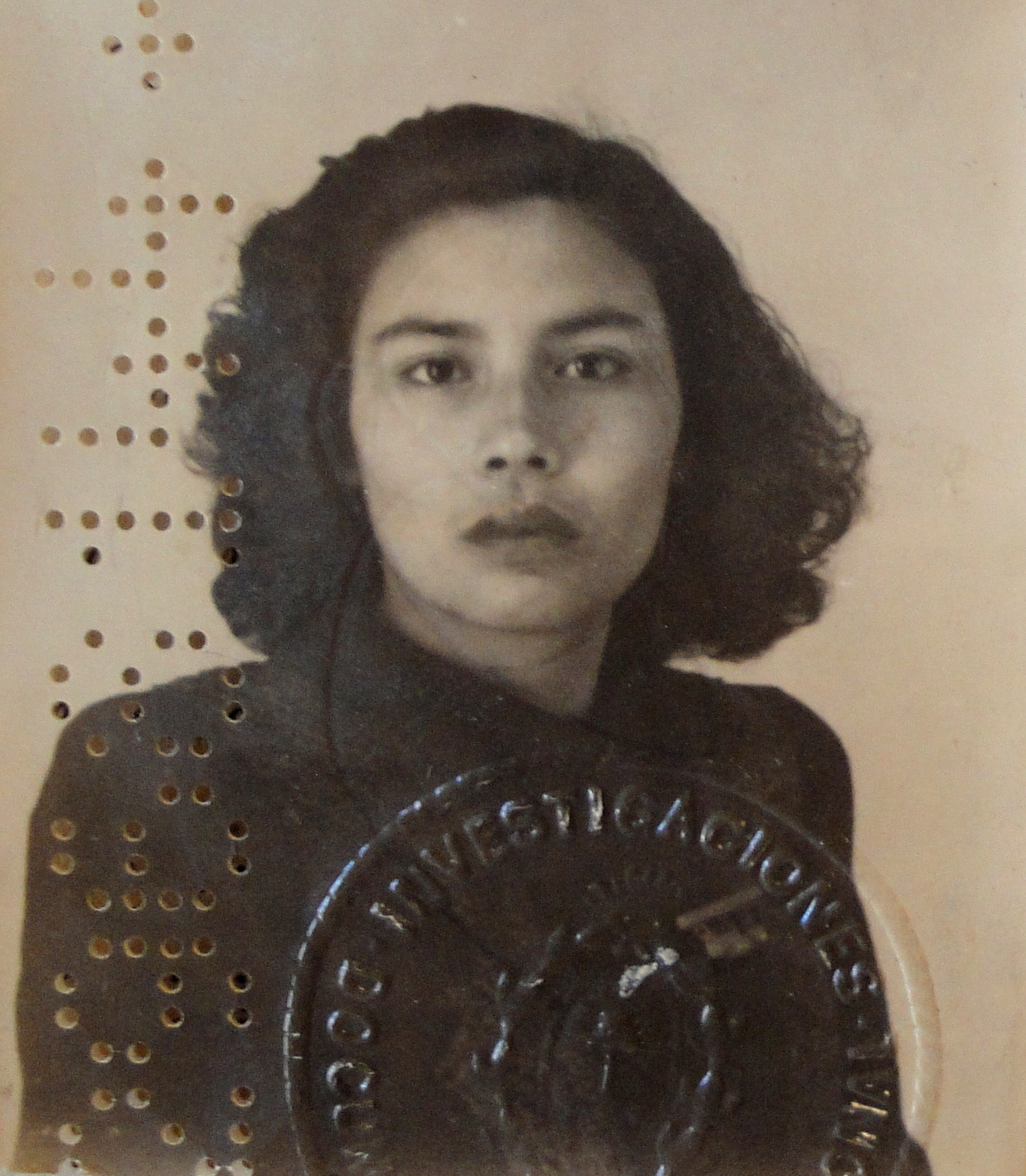
Photograph of Maria Batalla at age 24, September 1, 1944. This photo was taken the day Maria received her DNI (Documento Nacional de Identidad).
Although my grandmother Maria would remain a housekeeper and later a garment worker in Buenos Aires, her life changing decision is still something to be commended. During the time she lived on the estancia it was all too apparent that she, as did most women of el campo (countryside), would marry a common laborer and bear the children that would only fuel a lifestyle that she no longer saw herself apart of. She was able to overcome the inevitable and take a chance on something she believed in. Even if she couldn’t achieve all that she sought after by moving to Buenos Aires, her generations to come would possess the tools to achieve everything that she was not offered as a young girl. Her sacrifice for the betterment of her future served as an example to my family that we are not defined by the confinements of our social class. Maria, will always be considered a saint to my family who can attest to what life entailed both at an estancia and in the big city. She bridges the two worlds and it is through her and my family’s recounting of her story and contribution to us that her memories stay alive. They add to many others’ personal stories of determination which only enhances Argentine history and culture.




